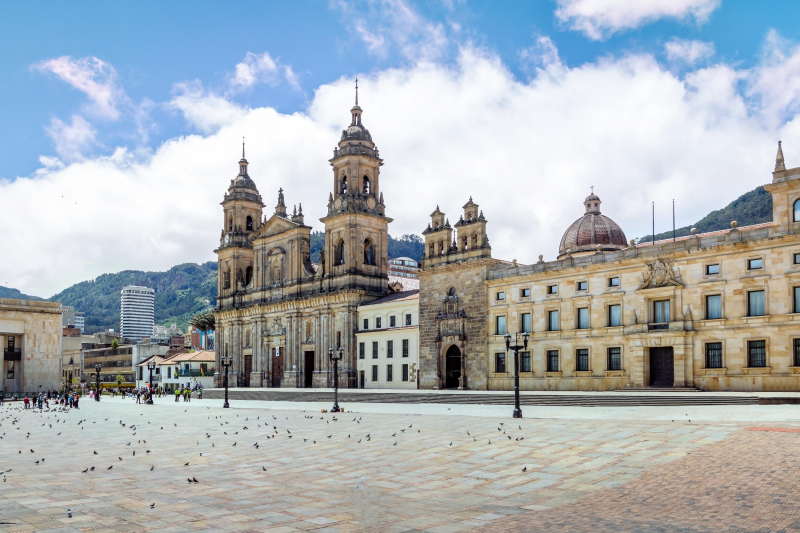Plaza de Bolivar
Plaza de Bolivar is called after the statue of Simon Bolivar that stands in its center. The statue was cast in 1846 by the Italian sculptor Pietro Tenerani and was Bogota's first public monument. Simon Bolivar is still regarded as a historical figure in South America, particularly in the northern countries of Colombia, Venezuela, and Ecuador. Bolivar, known as El Libertador (the Liberator), led the modern-day nations of Colombia, Ecuador, Venezuela, Panama, Bolivia, and Peru to independence from the Spanish Empire; practically all of these countries have major cities called Plaza de Bolivar in his honor.
The Muisca, a pre-Hispanic civilisation, used the site and is known to have erected multiple temples there. When the Spaniards arrived in the 16th century, they chose the area to erect a makeshift cathedral on the east side, and the square itself became a popular gathering place for major cultural or religious events. Several prominent municipal buildings surround the area, including the Palace of Justice on the north side. Versions of this edifice have been on the square since 1921, when the original was burned down during the El Bogotazo riots following the assassination of Jorge Gaitan, the Liberal Party's leader at the time. It was restored several times before being destroyed again in 1985 during a siege by insurgents and the Colombian army. The new structure was completed in 1998.
The major cathedral of Bogota presently sits on the east side, a 19th-century manifestation of former structures on the location. The Lievano Palace (Bogota's municipal hall) is on the west side, and the National Capitol, which houses both of Colombia's national congresses, is on the south. Plaza de Bolivar is a prominent protest venue, with huge demonstrations frequently beginning or concluding here. It's also a popular spot for demonstrators to set up tent.
Google rating: 4.6/5.0
Location: La Candelaria, Bogota,Colombia
Phone: +57 14629226
Opening hours: Daily











